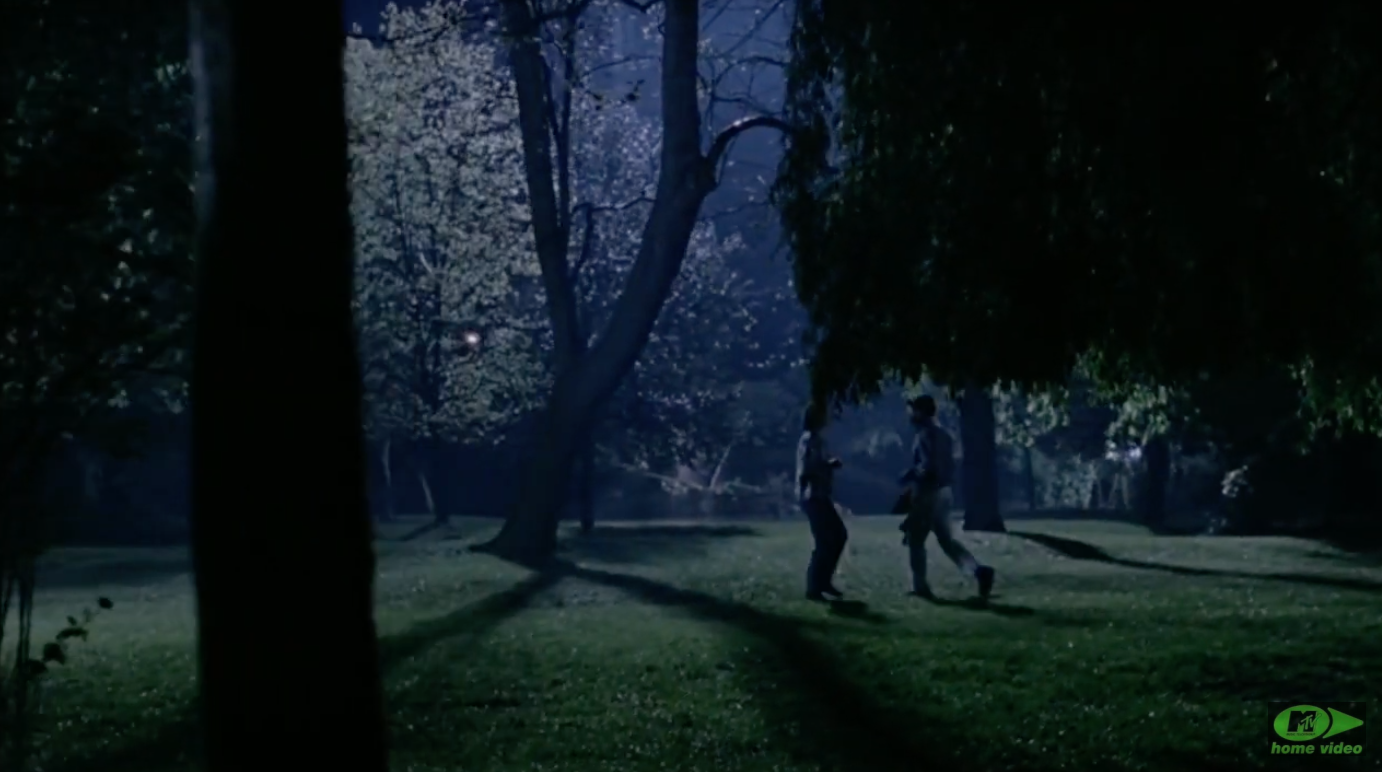Notting Hill
1999 - Comedy/Romance - 2h 4m
Wide Shot
This wide shot shows William and Anna alone, fooling around late at night after sneaking into the park. The shot creates a sense of space and calmness, as the subjects look small compared to their larger environment. The distance from the camera creates a sense of detachment from the characters, providing emphasis on the setting rather than their actions, as they seem to be playing around in their own world. By using this wide shot, the director allows the audience to take in the atmosphere of the scene, not only the characters emotions.
This eye-level shot captures Anna's emotions when William comes back for her, and she reveals she will be staying in Britain "indefinitely". The focus is entirely on her face, drawing attention to her emotions. Anna's smiley face conveys joy and warmth to us viewers, emphasized by how direct the shot is. This allows the audience to almost experience her own feelings as we were standing face-to-face with her! By keeping the camera at this level, the director provides a neutral point of view, mimicking how we normally see people in real life. This type of shot makes a scene more intimate and intense, creating a stronger connection between the character and audience.
This over-the-shoudler shot captures the iconic "just a girl" scence, where Anna asks William to love her, putting aside her fame. The placing of the camera creates an intimate interaction between the characters, while including viewers in the conversation, intesifying the emotional impact. By keeping William in frame, the shot reminds viewers of his presence and his personal feelings, while also focusing on Anna's emotions. The director creates anticipation and vulnerability by showing Anna's face from his perspective, making her "request" feel more personal. This type of shot balances the two characters in the scene, allowing the audience to feel involved in their moment.
This high angle shot shows William's family and friends reacting to Anna's unexpected statement, saying she should have a chance at winning the last brownie. The angle showcases the entire group, as they give one another side glances, emphasizing their similar reaction to Anna speaking up. The shift from a normal eye level shot to the high angle, acts as a pause, demonstrating the groups confusion and shock at her volunteering to "compete" for the brownie. By looking down on the group, the director creates a sense of shared intimacy and understanding between the characters and viewers, allowing them to share this moment.
Full Shot
This full shot captures two kids playing in a park at the end of the movie, once everything in William and Anna's relationship is resolved. It shows a full view of their bodies and their surrounding environment, giving the audience an understanding on what the kids are doing and where they are. By focusing on the children from head to toe, the director emphasizes their energy and joy as they run around the open park. This shot creates a sense of playfullness and freedom, allowing viewers to feel the hapiness of the scene, overall uplifting their mood.






Comments
Post a Comment